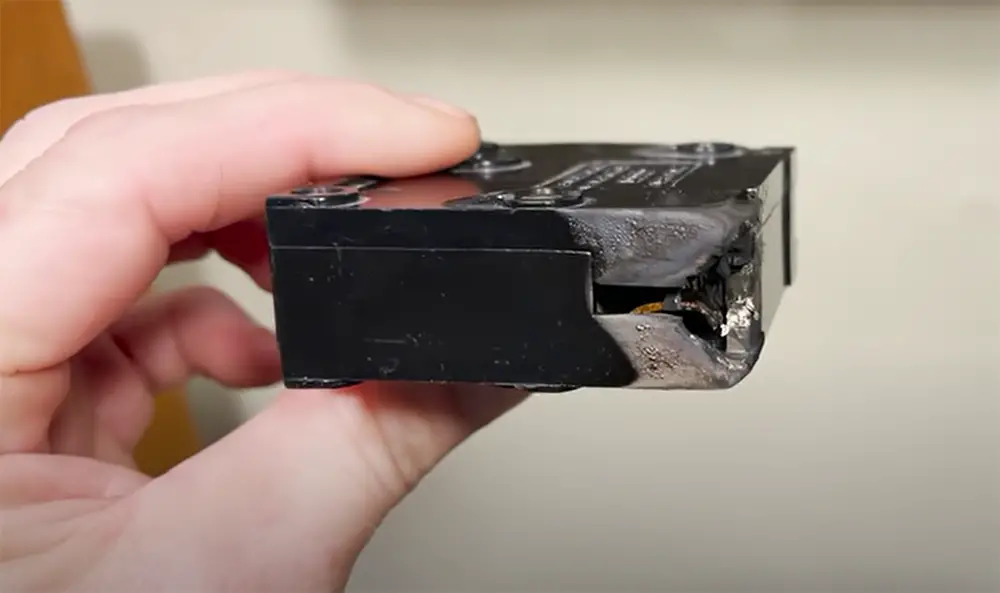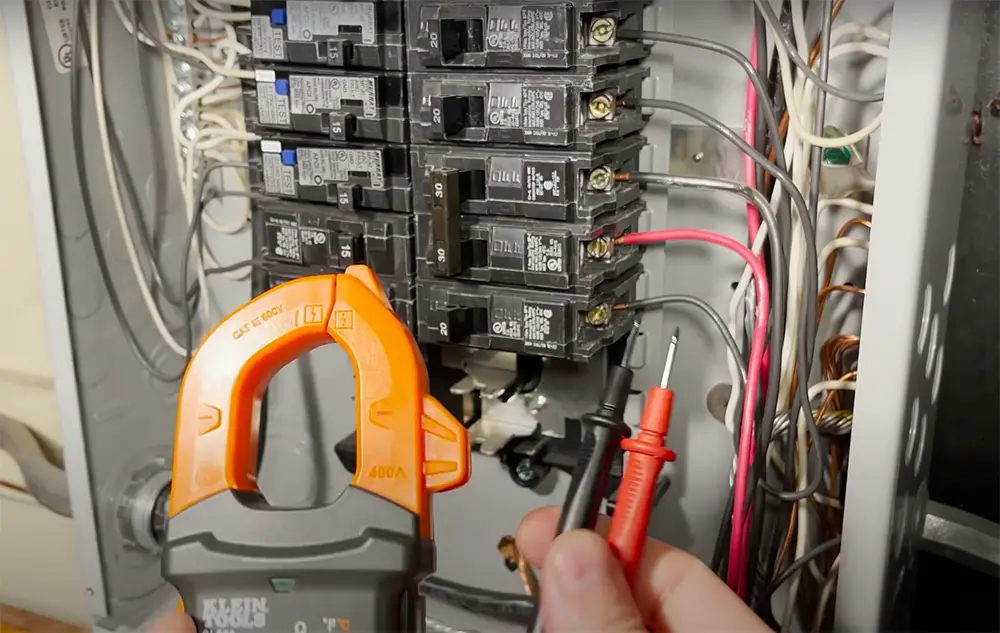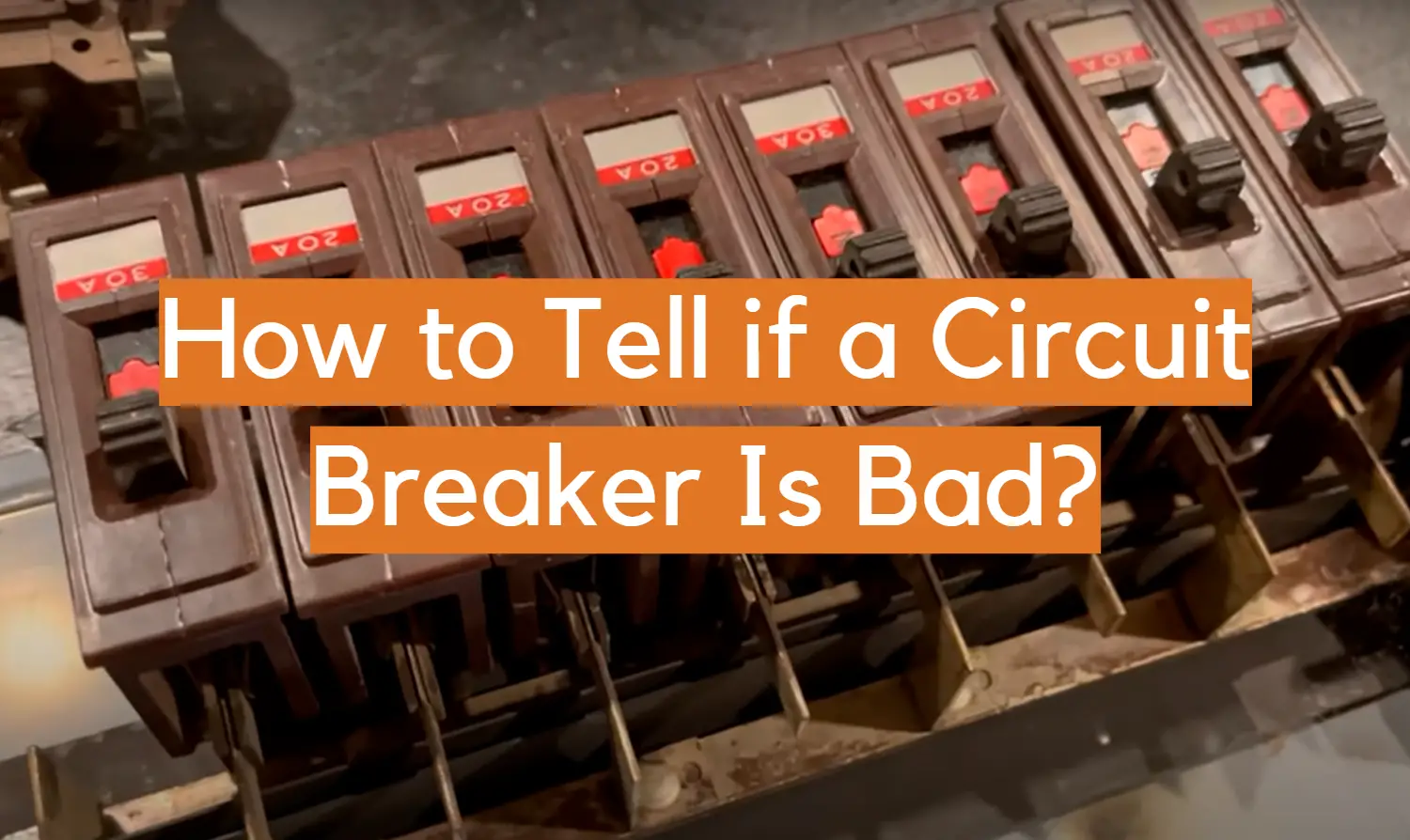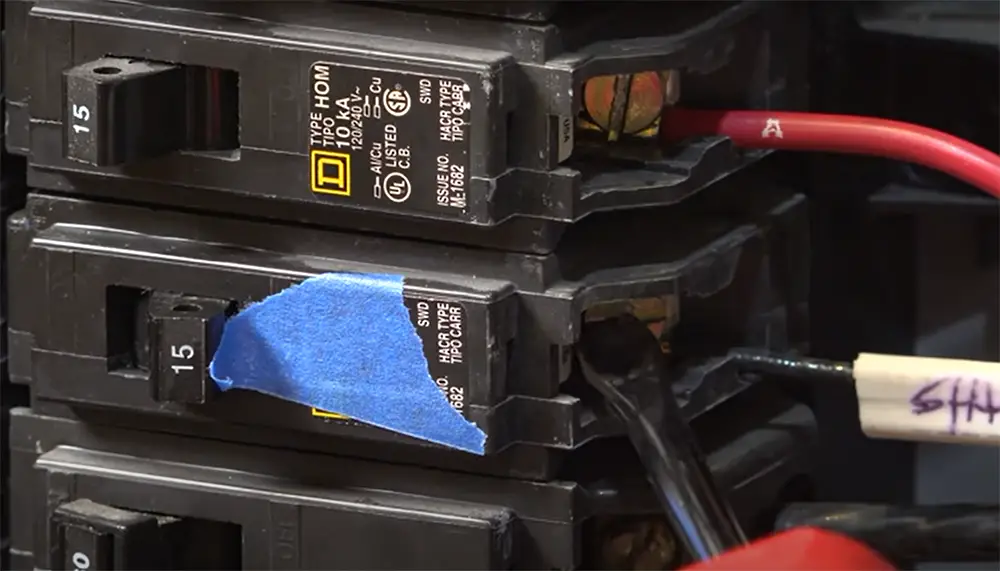Finding yourself suddenly in the dark when the power goes out is never a fun situation. Your first instinct may be to rush to the circuit breaker box and flip the switch. But what if that doesn’t restore the lights? A faulty circuit breaker could be to blame. Knowing when your circuit breaker is failing is crucial to avoid potential electrical hazards. This guide will walk through the signs of a bad breaker and provide tips on testing its condition using a multimeter. With the right information, you can determine if replacement is needed and take steps to prevent future issues. Read on to learn the key things to look for when diagnosing a problematic circuit breaker in your home.
Brief Summary
This article provides an overview on how to diagnose a faulty circuit breaker. It explains what circuit breakers are and why it’s important to monitor their condition. Signs of a bad circuit breaker are outlined, like flickering lights, evident damage, burning smells, frequently tripping, and more. Tips are provided for testing circuit breakers using a digital multimeter. To test, unplug the breaker, unscrew the panel, set the multimeter to AC voltage, attach the probes, and check the voltage readings. A properly working breaker should show 120-250 volts. If the reading is low or zero, the breaker is likely faulty. The article also covers precautions for safely handling breakers and notes only experienced individuals should attempt testing. Overall, watching for signs of a failing breaker and testing with a multimeter can help determine if replacement is needed.
What is a Circuit Breaker?
A circuit breaker is an important part of your electrical system. It is a switch that automatically turns off power to an electrical circuit when there is an overload or short circuit. This protects your home from fire and damage caused by electrical surge.

You can find your circuit breaker box in a variety of locations. It is usually located near the electrical meter or where the main power comes into your home. If you cannot find it, check your local building code for the exact location.
Circuit breakers are used in both residential and commercial buildings. They are typically found in the main electrical panel, which is usually located in the basement or garage.
There are two types of circuit breakers:
Manual reset circuit breakers have a switch that must be turned off and then on again to reset the breaker. This type of breaker is typically used in appliances such as air conditioners, stoves, and clothes dryers.
Automatic reset circuit breakers have a built-in mechanism that automatically resets the breaker when it trips. This type of breaker is typically used in lights and outlets. [1], [2]
Why is It Important to Monitor the Condition of a Circuit Breaker?
The condition of a circuit breaker is important to monitor for two main reasons. First, if the breaker is not working properly, it can cause an electrical hazard. Second, a breaker that is not working properly can lead to increased energy costs.
Circuit breakers typically have a lifespan of around 20 years. However, this can vary depending on the type of breaker and how often it is used.
Now that we know a little more about circuit breakers, let’s talk about how to tell if one is bad.
Main Signs of a Faulty Circuit Breaker
There are a few signs that may indicate your circuit breaker is not working properly. Let’s discuss them.
Flickering lights
One of the most common signs of a bad circuit breaker is flickering lights. If you notice that the lights in your home are flickering, it is a good idea to check the circuit breaker box. If the breaker is faulty, it can cause the lights to flicker on and off.

Another sign of a problem with your circuit breaker is if the lights dim when you turn on an appliance such as a hair dryer or vacuum cleaner. This happens because the appliance is drawing more power than the circuit can handle.
Evident damage to the breaker
The most obvious way to tell if a circuit breaker is bad is by checking for any physical damage. If the breaker has been burned or melted in any way, it needs to be replaced immediately. Even if there is no visible damage, if the breaker feels hot to the touch, it should be replaced.
Another way to check for damage is by looking at the handle of the breaker. If the handle is not level with the rest of the breakers, or if it feels loose, this could be an indication that there is internal damage and the breaker needs to be replaced.
If you are unsure whether or not the circuit breaker is damaged, it is always best to err on the side of caution and replace it.
Burning smell
If you notice a burning smell coming from your electrical panel, it is probably caused by a faulty circuit breaker. The burning smell is usually caused by overheated wires. If you notice this sign, you should immediately call an electrician to check your electrical panel.
Hot to the touch
If your circuit breaker is hot to the touch, it’s definitely not operating as it should. This is likely caused by an electrical overload and means that your breaker is not properly protecting your home from a fire hazard.
Overloaded circuits are a major fire hazard, so if you notice this problem with your circuit breaker, it’s important to take action immediately. You can either replace the breaker yourself or call an electrician to do it for you.
If you decide to replace the breaker yourself, make sure you turn off all power to the breaker before removing it. Then, follow the instructions in your owner’s manual when installing the new one.
Overall age of the circuit breaker
As we mentioned earlier, circuit breakers have a lifespan of around 20 years.
If your breaker is older than this, it may be time to start thinking about replacing it. Of course, the age of the breaker is not the only factor to consider. The type of breaker and how often it is used can also affect its lifespan. If you used your breaker frequently, it may need to be replaced sooner.
Wiring and connections can loosen over time, which can cause arcing (sparks). This causes severe wear on the breaker, and eventually, it will fail to trip when needed.
Trip frequency
Another common sign of a faulty circuit breaker is an increase in trip frequency. A trip frequency is a measure of how often a circuit breaker trips. If your circuit breaker trips more than once in a span of two hours, there may be something wrong with it. You should call an electrician to check your electrical panel if this happens.

There are two main things that can cause a circuit breaker to trip:
- Overloading: This happens when too much current flows through the breaker.
- Short circuiting: This happens when the current flowing through the breaker isn’t balanced.
If you’re not sure what’s causing your breaker to trip, you can try resetting it. To do this, simply turn off all the devices and appliances that are plugged into the circuit, then flip the switch on the breaker to the “off” position. Wait a few minutes, then flip it back to the “on” position.
If the breaker trips again, that’s an indication that there’s a problem with the circuit that needs to be addressed.
If your breaker is tripping more often than it used to, it’s time to have it checked out by a professional.
Another sign that your breaker may be going bad is if it trips without any obvious reason. If this happens, it’s possible that the breaker is not correctly sized for the electrical load it is being asked to carry. A third sign of a problem with your circuit breaker is if it won’t reset after being tripped. This could be an indication that the breaker has burned out and needs to be replaced.
It doesn’t stay in the reset mode
The reset mode is the mechanism by which a circuit breaker can be manually reset after it has tripped. This is generally done by flipping a switch on the breaker panel. If the breaker trips again, it may be an indication that there is a problem with the wiring or another electrical component in your home.
If your breaker trips and won’t stay reset, that’s a sign that it’s become faulty and needs to be replaced. One common cause of this problem is when the breaker’s internal components become damaged or worn down from overuse. [1], [2]
Test a Circuit Breaker With a Digital Multimeter
Those were some of the most common signs that your circuit breaker is going bad. If you notice any of these signs, it’s important to have a professional electrician check out your breaker as soon as possible.
A multimeter is an instrument that measures voltage, current, and resistance. A multimeter can be either digital or analog.
Digital multimeters (DMM) are the most common type of multimeter. DMMs use a digital display to show readings. Analog multimeters (AMM) have a needle that moves across a scale to show readings.

Which type of multimeter you use is up to you. However, we recommend using a DMM because they are more accurate than AMMs and easier to read.
Unplug the breaker from the outlet
To test a circuit breaker with a digital multimeter, you’ll first need to unplug the breaker from the outlet. This will allow you to safely access the breaker without risk of electrical shock.
Unscrew the panel off the breaker
Once the breaker is unplugged, you’ll need to unscrew the panel off the breaker. This will give you access to the internal workings of the breaker. Be very careful when handling a circuit breaker, as they contain live electrical components that can be dangerous if not handled properly.
Set your multimeter to AC voltage
Once you have access to the breaker, you’ll need to set your multimeter to AC voltage. AC voltage is an alternating current that flows back and forth in a circuit. The current in a circuit is measured in amperes or “amps.” Voltage is measured in volts. The strength of the current flowing through a circuit is determined by the voltage applied to it. A higher voltage will cause more current to flow through the circuit. A lower voltage will cause less current to flow. If there’s no voltage at all, then there is no current.
Therefore, to test a circuit breaker, you need to measure the voltage that is applied to it. To set your multimeter to AC voltage, look for a setting on the multimeter that says “ACV” or “AC Voltage.” Now that your multimeter is properly calibrated, you’re ready to take a reading.
Plug the multimeter wires in
Multimeters have two wires that must be plugged into the correct ports on the device. Touch one probe to the breaker’s terminal screw and the other to the ground screw.
Check the readings
In a properly functioning circuit breaker, you should see a reading of around 120-250 volts. If the reading is significantly lower than this, or stays at 0, it’s an indication that the breaker is faulty and needs to be replaced.
FAQ
What are the signs of a breaker going bad?
The most common sign that a breaker is going bad is when it trips or shuts off more frequently than normal. This can be caused by anything from a loose wire to an overloaded circuit. If you notice your breaker trip or shut off more often, it’s important to have it checked out by a professional as soon as possible.
Other signs that a breaker might be going bad include flickering lights, dimming lights, and buzzing or humming noises coming from the breaker box. These are all indications that there may be an issue with the electrical current flowing through the breaker.
How do you test a breaker to see if it’s good or bad?
There are a few ways that you can test your breaker to see if it is good or bad. The first way is to use a circuit tester. This will tell you if the breaker is getting power and if it is functioning properly.
Another way to visually inspect your breaker is to remove the cover and look for any signs of damage. If you see any burnt or discolored areas, this could be a sign that your breaker is bad.
You can also test your breaker by flipping it off and then back on again. If the breaker trips immediately, this could be a sign that it is bad.
How do you check a circuit breaker?
The most common way to check whether a circuit breaker is bad is to use a multimeter. Checking the continuity of the circuit breaker with a multimeter will tell you whether it needs to be replaced.
Another way to check whether your circuit breaker is bad is by looking for signs of corrosion or damage. If you see any physical damage, it’s likely that the circuit breaker needs to be replaced.
If your circuit breaker trips frequently, this could also be a sign that it’s going bad. If you find yourself resetting your circuit breaker often, it’s time to replace it.
Can a circuit breaker randomly go bad?
Yes, a circuit breaker can randomly go bad. However, there are usually signs that a circuit breaker is going bad before it actually fails. For example, the circuit breaker may trip more often than usual, or it may take longer for the circuit breaker to reset after it trips. If you notice any of these signs, it’s best to have the circuit breaker checked by a qualified electrician.
Another common cause of circuit breakers going bad is simply age. Over time, the internal components of a circuit breaker can degrade and become less reliable. This is why it’s important to regularly check your home’s electrical system, and replace any outdated or damaged components as soon as possible.
Conclusion
Diagnosing that a circuit breaker is bad can be difficult without the right tools and know-how. With this guide, you should be able to tell if your circuit breaker is going bad. Over time, circuit breakers can deteriorate and become less effective at doing their job. If you notice that your breaker is frequently tripping or if it’s hot to the touch, it’s important to have a professional electrician take a look at it. If you feel confident, you can test the condition using a multimeter. Remember, testing a circuit breaker is just one way to determine if it needs to be replaced. In some cases, visual inspection of the breaker may be all that’s needed to determine that it needs to be replaced. If you have any questions, feel free to leave a comment below and we’ll do our best to answer it. And if you found this guide helpful, please share it with your friends! Thanks for reading!
References:
- https://www.baypower.com/blog/how-to-tell-if-a-circuit-breaker-is-bad/
- https://boggsinspect.com/how-tell-if-a-circuit-breaker-is-bad/
- https://www.galvinpower.org/how-to-tell-if-a-circuit-breaker-is-bad/














Leave a Reply